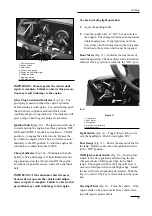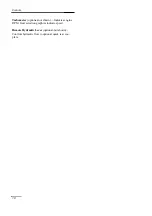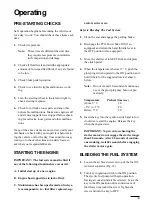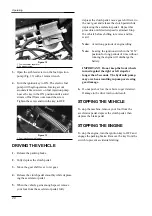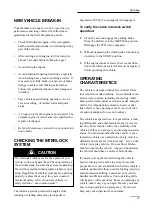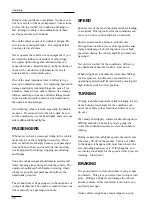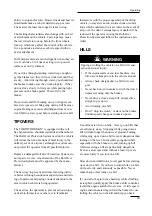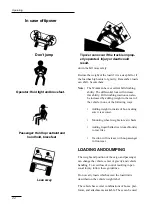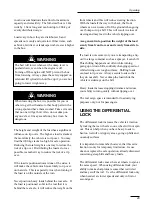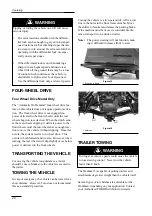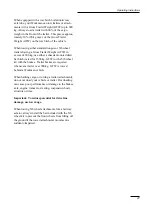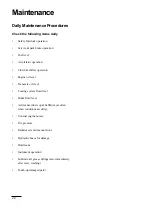
2. Clean the area around the dipstick.
3. Unscrew the dipstick from the top of the
transaxle and wipe it with a clean cloth.
Figure 5
1. Dipstick
4. Screw the dipstick into the transaxle and make
sure it is seated fully. Unscrew the dipstick and
check fluid level. Fluid should be up to the top
of flat portion of the dipstick. If the level is low,
add enough fluid to achieve the proper level.
CHECK FRONT DIFFERENTIAL
OIL
Four-Wheel Drive Model Only
The differential is filled with 10W30 oil. Check the
level of oil every 100 hours or monthly. Capacity of
the system is 0.95 l.
1. Position the vehicle on a level surface.
2. Clean the area around the fill plug on the side of
the differential
3. Remove the fill plug and check the level of oil.
Oil should be up to the hole. If it is low, add
10W30 oil.
4. Install the fill plug.
Figure 6
1. Front differential
2. Fill plug
3. Drain plug
CHECK WHEEL NUT TORQUE
CHECK TIRE PRESSURE
Check tire pressure every 8 hours or daily.
Maximum air pressure in the front tires is 1,4 kg/cm
2
and 2,3 kg/cm
2
in the rear (23”) tires tires. Rear
(24”) tire pressure is 18 psi maximum.
1. The air pressure needed is determined by the
payload carried.
2. The lower the air pressure, the less the com-
paction and tire marks are minimized. Lower
pressure should not be used for heavy payloads
at high speeds. Tire damage may result.
3. Higher pressures should be used for heavier pay-
loads at higher speeds.
Do not exceed the maximum pressure. Use the fol-
13
Before Operating
➀
Failure to maintain proper torque could result in
failure or loss of wheel and may result in personal
injury. Torque front and rear wheel nuts to 61–88
Nm after 1–4 hours of operation and again after 10
hours of operation and every 200 hours thereafter.
WARNING

















